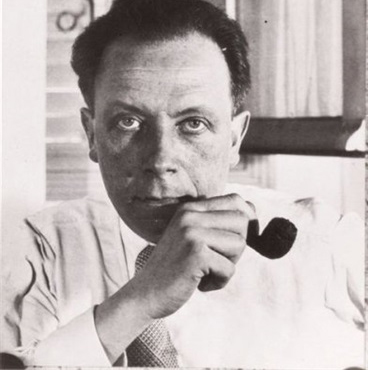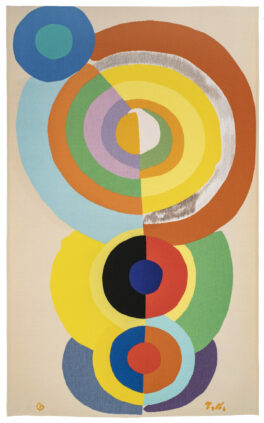Robert Delaunay
Artwork
Biography
Robert Delaunay (1885-1941) was a major French painter, recognized for his pivotal role in the development of abstract art and Orphism, a movement he co-founded with his wife Sonia Delaunay. An innovator by nature, Delaunay was interested in color, light and movement, seeking to capture the modern experience of urban life through his vibrant works, including his tapestries.
In the 1920s, Delaunay began to explore the field of tapestry, seeing the medium as a new way of expressing his artistic ideas. His encounters with tapestry artists and craftsmen, notably at the Aubusson workshops, enabled him to translate his unique aesthetic into textiles. Working with the Denise René gallery, Delaunay helped redefine tapestry as an art form in its own right, incorporating the geometric motifs and dynamic compositions that characterize his style.
Delaunay’s works are distinguished by their bold use of color and sense of rhythm, creating a sense of movement and depth. His tapestries, such as those inspired by his famous paintings, reflect his innovative approach and commitment to textile art. His famous painting “La Ville de Paris” is emblematic of his vision, where he seeks to represent modernity through circular forms and chromatic juxtapositions. This approach is also evident in his tapestries, where texture and color play a key role.
Delaunay also created tapestries for the Mobilier National, reinforcing his place in the history of tapestry. These creations testify to his desire to unite the decorative arts with pure art, an ambition that resonates with his commitment to the idea of a “synthesis of the arts”.
Robert Delaunay’s legacy was particularly highlighted when his work was retrospectively exhibited at the Musée d’Art Moderne de la Ville de Paris in 1965, where his tapestries were also shown. His influence endures in contemporary art, and his tapestries continue to be exhibited and admired, illustrating his ability to transcend the boundaries between painting and textiles. Delaunay’s work paved the way for new artistic explorations in tapestry, making him a key figure of the 20th century.


